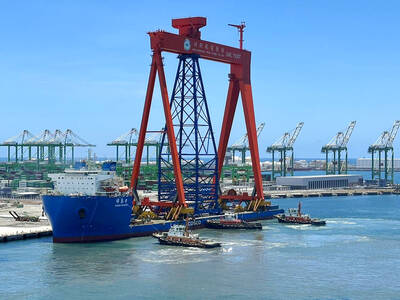I’ve just been doing my semi-regular roundup of what’s new in the world of woo-woo, so let me fill you in. Grazia has a “$15k an hour intuition coach” teaching A-listers to tap into their sixth sense, which is a little tame, but I struck gold with the Atlantic, which has introduced me to the concept of “subliminals.”
This is properly out there: TikToks or YouTube videos that, the claim goes, can work magic, giving you a smaller nose, making you smell of vanilla (?) or getting your crush to call you “IMMEDIATELY.” They remind me of the slips of paper that used to arrive in our letterbox when I lived in Brussels from local marabouts (sorcerers), promising sexual potency, the removal of curses, weight loss, guaranteed parking spots and more.
It’s another iteration of a wave of magical thinking that shows no sign of weakening. I’ve ticked off manifesting (willing what you want into being), lucky girl syndrome (erm, believing you’re lucky?), ghost, psychics and #witchtok. There are people all over Instagram drawing tarot and offering blessings, spells, virtual aura readings and “cures.”

Photo: EPA-EFE
Astrology never went away, but it’s in rude health: “Chaos awaits as Mercury retrograde spins into Venus,” reads my latest unsolicited e-mail. What next? Perhaps alchemy is due a reboot? God knows we could all do with some free gold.
I’m gripped, for various reasons. First, it’s just deeply, fascinatingly odd. There is also something perverse about how the Internet has become the delivery mechanism for so much that is anti-rational: we took this creation forged from the steeliest rigorous science, sage smudged it and popped a crystal on the top. It’s interesting — perhaps inevitable — that this is happening now Upheaval (violence, plague, a growing sense the world is spinning awry) leads this stuff to re-emerge; when reality is hard to face, people find alternatives.
The current age of superstition feels a bit fin de siecle (the end of the 19th century was convulsed with interest in the occult, magic and mysticism), except this time I suppose it’s more a fin-du-monde vibe. We are drawn to spooky signs and portents — does the reappearance of the giant oarfish signal catastrophe? — when it’s the graphs and climate science that are telling the scariest story.
On an individual level, it’s interesting, too. Is “delulu the solulu” (yes, another TikTokism — damn, it’s catchy, I’ve been muttering it for days) — particularly if you are gen Z? I don’t think people are necessarily taking this stuff seriously. I hope not. Surely no one thinks you can straighten your teeth or get an A-list lifestyle by watching a TikTok or following an Instagram recipe for a positivity potion? In my experience that age group are pretty clear about the grim limitations of life in 2023, so I assume it’s mainly a playful, absurdist refusal of a fairly unpalatable reality.
“In this generation I believe that being delusional is one of the key factors to being happy,” as one TikToker says, before superimposing a cartoon Mario hat and moustache on his face and shouting: “Think positive, mamma mia!”
But are there real believers? Maybe it’s not that unlikely. Even if we leave the small matter of continued survival on this planet aside and confine ourselves to the nearer future, the life young people would like is probably utterly out of reach. A US magazine costed the not especially ridiculous aspirations of young New Yorkers recently (a nice flat, kids, travel), showing just how impossible they were. If what you want doesn’t look accessible through the conventional channels (studying, saving, striving, self-improvement), some will turn to the unconventional, I suppose. Take a bit of life coaching from a rabble of latter-day Madame Arcatis, look for signs that you are on the right path from a random string of “angel” numbers or your train ticket or till receipt; see if you can believe your dreams into existence.
When you feel ordinary stuff — a fulfilling, decently paid job, owning a home, having a family or even a belief in a reasonably secure future — is only accessible through magic, that is properly spooky.

The canonical shot of an East Asian city is a night skyline studded with towering apartment and office buildings, bright with neon and plastic signage, a landscape of energy and modernity. Another classic image is the same city seen from above, in which identical apartment towers march across the city, spilling out over nearby geography, like stylized soldiers colonizing new territory in a board game. Densely populated dynamic conurbations of money, technological innovation and convenience, it is hard to see the cities of East Asia as what they truly are: necropolises. Why is this? The East Asian development model, with

June 16 to June 22 The following flyer appeared on the streets of Hsinchu on June 12, 1895: “Taipei has already fallen to the Japanese barbarians, who have brought great misery to our land and people. We heard that the Japanese occupiers will tax our gardens, our houses, our bodies, and even our chickens, dogs, cows and pigs. They wear their hair wild, carve their teeth, tattoo their foreheads, wear strange clothes and speak a strange language. How can we be ruled by such people?” Posted by civilian militia leader Wu Tang-hsing (吳湯興), it was a call to arms to retake

This is a deeply unsettling period in Taiwan. Uncertainties are everywhere while everyone waits for a small army of other shoes to drop on nearly every front. During challenging times, interesting political changes can happen, yet all three major political parties are beset with scandals, strife and self-inflicted wounds. As the ruling party, the Democratic Progressive Party (DPP) is held accountable for not only the challenges to the party, but also the nation. Taiwan is geopolitically and economically under threat. Domestically, the administration is under siege by the opposition-controlled legislature and growing discontent with what opponents characterize as arrogant, autocratic

When Lisa, 20, laces into her ultra-high heels for her shift at a strip club in Ukraine’s Kharkiv, she knows that aside from dancing, she will have to comfort traumatized soldiers. Since Russia’s 2022 invasion, exhausted troops are the main clientele of the Flash Dancers club in the center of the northeastern city, just 20 kilometers from Russian forces. For some customers, it provides an “escape” from the war, said Valerya Zavatska — a 25-year-old law graduate who runs the club with her mother, an ex-dancer. But many are not there just for the show. They “want to talk about what hurts,” she